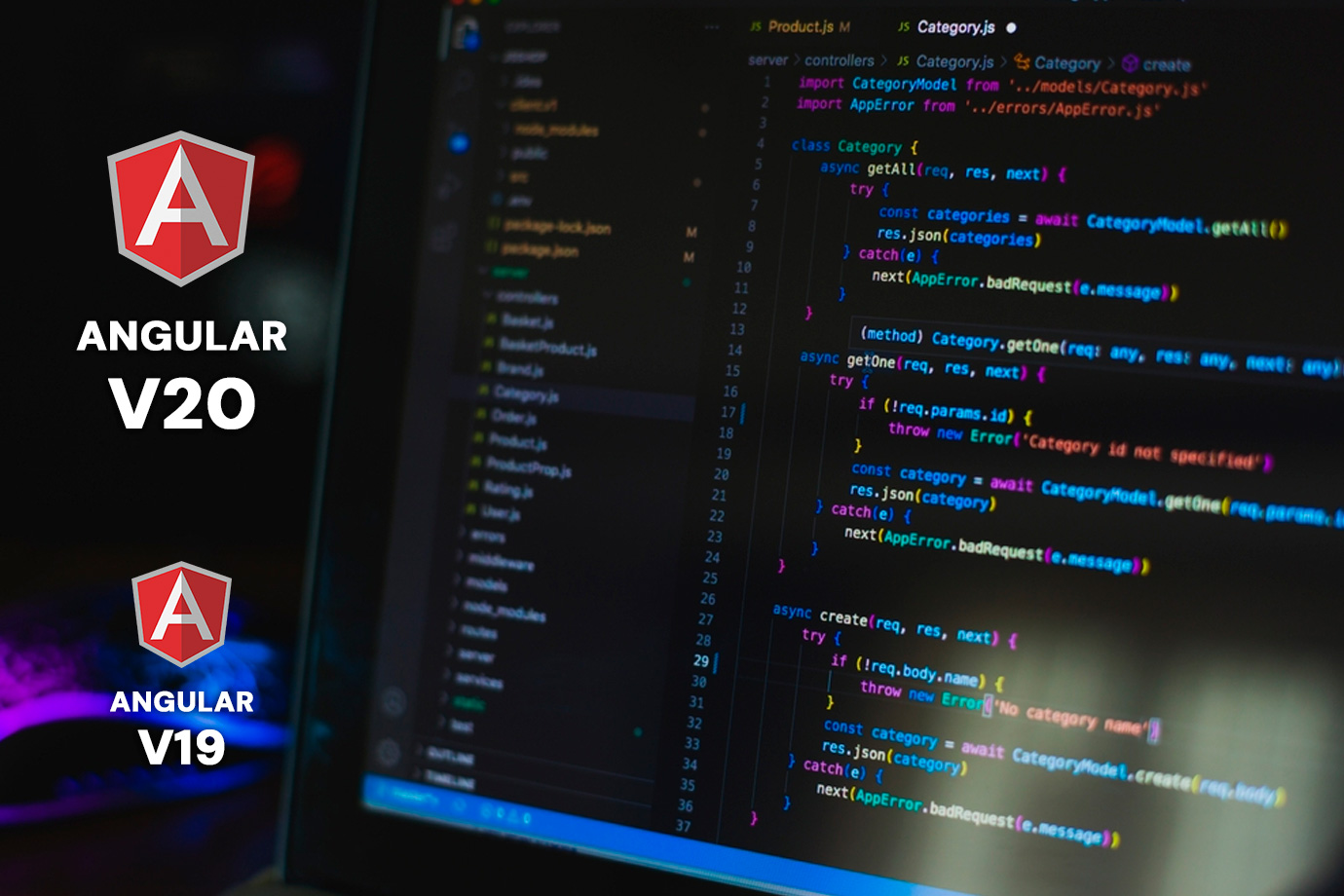Angular v19 vs Angular v20: Major Differences, Features, and Performance Upgrades

02 Jul 2025
If you're a web developer, freelancer, or running a lean startup, you know that every framework update isn't just about the hype; it's about staying efficient, scalable, and user-focused. With Angular v20 now officially released, many are asking: What really changed since Angular 19?
Is it worth the upgrade? What are the key differences in performance, features, and developer experience?
Let’s break it all down. No jargon, just real-world takeaways from the perspective of those who build apps for clients, launch MVPs, and juggle tight timelines.
Why Version Upgrades Matter, Especially for Small Teams
For solo devs or startup teams managing business platforms, e-commerce portals, or gig economy tools, updating a tech stack can be daunting. But here’s the thing: newer versions often reduce long-term pain.
From smoother builds to improved maintainability and SEO-friendly rendering, the transition from Angular 1.9 to 2.0 isn't just incremental—it's practical.
Angular v19 at a Glance
Before diving into the latest, let’s recall what Angular v19 brought to the table:
Key Features of Angular 19
- Control Flow Syntax (Preview): Angular introduced a new syntax like @if, @for, and @switch, moving closer to what devs are used to in React or Vue.
- Improved Build Performance: Angular 19 tweaked the compiler and bundling process, leading to smaller build sizes and faster dev server start-ups.
- Dependency Injection Improvements: Provided better tooling around lazy loading and scoped injectors, especially useful in modular apps.
Angular 19 was the version where Angular started embracing modern JS ergonomics without sacrificing its structured approach.
What’s New in Angular 20
Angular v20 builds on that momentum with real firepower. Here's what makes it a serious step up:
1. Signal-Based Reactivity (Out of Preview)
Angular 19 introduced signals in preview, but Angular 20 makes them a core part of the framework.
What are Signals?
They’re a reactive, primitive, like observables, but simpler and more performant. They replace Zone.js for change detection in many use cases.
Why it matters:
Say you’re building a time-tracking tool for freelancers. With signals, you get real-time UI updates for timers or earnings without the messy overhead of ChangeDetectorRef. Less boilerplate, smoother UI, and better performance.
2. Standalone Components Default
Angular 19 supported standalone components, but Angular 20 makes them the preferred way to build new components. No more boilerplate NgModules, just define and go.
Real-world win:
For a startup building a quick MVP for a client dashboard or gig worker portal, this significantly reduces development time and makes your code more maintainable when handed off to another team.
3. Hydration Improvements for SSR & SSG
Server-side rendering (SSR) and static site generation (SSG) get a big boost in Angular 20 with smarter hydration strategies.
Why care?
Google’s still watching Core Web Vitals. Faster time-to-interactive means better rankings, which is vital if you're optimizing pages for keywords like “freelancer tax deductions 2025” or “self-employed IRS tips.”
4. Vite Integration (Experimental)
Angular CLI now offers experimental support for Vite, the blazing-fast build tool used in many modern JS stacks.
Why does this matter to small teams?
If you're developing e-commerce or SaaS platforms, faster local builds mean quicker iterations. And when you're on a budget or a tight deadline, speed counts.
5. Better Tooling & Accessibility Checks
Angular 20 enhances built-in tools to catch accessibility violations early in development. That's not just ethical, it’s good business. Many states in the U.S. now require ADA compliance for public-facing sites.
Angular v19 vs Angular v20: A Quick Comparison Table
| Feature | Angular v19 | Angular v20 |
|---|---|---|
| Signals | Experimental | Fully Integrated |
| Standalone Components | Optional | Default & recommended |
| SSR/SSG Hydration | Basic | Smart & optimized |
| Build System | Angular CLI (esbuild) | Angular CLI + Vite (Experimental) |
| Control Flow Syntax | Preview | Improved |
| Zone.js | Required | Optional (moving away from it) |
| Accessibility Tools | Basic | Enhanced with automatic checks |
Performance Benchmarks: Real-World Impact
Let’s say you run a small web agency and just delivered a gig booking platform. You migrate from Angular 19 to 20. Here’s what you might see:
- Initial Load Time: ↓ 20–30% thanks to smarter hydration
- Bundle Size: ↓ 10–15% with better tree-shaking and signals
- Dev Build Time: ↓ up to 50% if using Vite
- User Engagement: ↑ especially on mobile, due to faster rendering
It’s not just about shaving milliseconds. It's about delivering perceived speed, which improves conversion rates and retention metrics your clients care about.
Should You Upgrade Now?
Here’s the honest answer: yes, if you're already on Angular 16+. The migration is straightforward, and Angular’s update guide is one of the most developer-friendly out there.
When to Upgrade:
- You’re building SEO-friendly landing pages
- You want faster, modular component builds
- You're exploring progressive web apps (PWAs)
- Your current app feels sluggish or bloated
When to Wait:
- You're deep in a legacy AngularJS or Angular 8-12 codebase
- Your app has critical dependencies on third-party modules not yet updated for v20
Still unsure? Test it on one feature module. Migrate a non-critical dashboard or a marketing page. Measure the impact before committing.
Actionable Tips for a Smooth Upgrade
- Use Angular CLI’s upgrade assistant: ng update @angular/core@20 @angular/cli@20
- Refactor modules to standalone components gradually
- Replace common BehaviorSubject stores with signals where possible
- Turn on hydration for your server-rendered routes if you're using Angular Universal
- Monitor bundle sizes using source-map-explorer or webpack-bundle-analyzer
Final Thought: Evolution, Not Revolution
Angular 20 doesn’t throw out what you love—it sharpens it. For small businesses and solo devs alike, the upgrade offers cleaner syntax, faster builds, and tools that simplify both maintenance and growth.
Whether you're building a CRM for a small business, a scheduling app for freelancers, or an invoicing portal for gig workers, Angular 20 empowers you to move faster and build smarter.
Ready to Upgrade Your Stack?
At NanoByte Technologies , we specialize in helping startups, freelancers, and SMBs modernize their web platforms using Angular, React, and .NET. Need expert help migrating to Angular 20 or optimizing your existing codebase?
Let’s talk performance, speed, and scale together.





